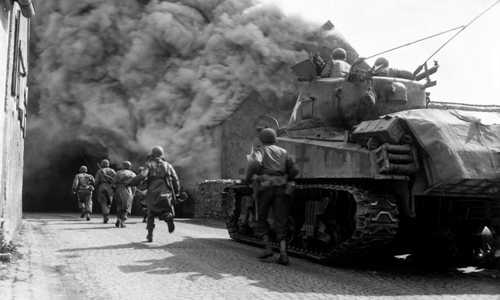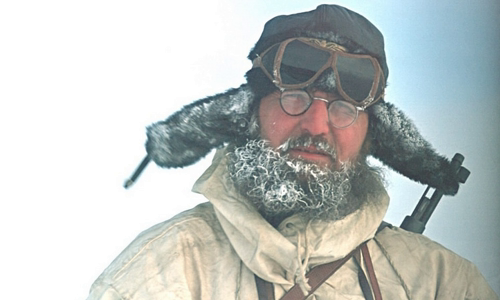Many German units did not give up their weapons even when the government surrendered unconditionally, causing much damage to the Allies.
On May 8, 1945, the Nazis surrendered unconditionally to the Allies, putting an end to World War II. However, peace has not been restored in Europe. The rapid advancing speed and the large battlefield caused the Allies to miss many German units.

The Allies attacked a German base in 1944 Photo: National Interest
These remnants refused to give up and continued fighting for months after the surrender of the Nazi government, causing the Allies to continue to suffer casualties, despite the nominal war over.
The city of Dessau, east of Germany, is where the Soviet forces and Western countries have not yet joined forces, creating conditions for large German forces to continue operating. Further north, several SS troops occupied the forest around the town of Bad Segeberg, entrenched in fortifications and refused to surrender to the Allies.
Admiral Karl Dönitz, the head of the German state after Adolf Hitler committed suicide, ordered the group to surrender but failed. He decided to send Germany's 8th Parachute Division to Bad Segeberg to assist the British 11th Armored Division to defeat the remnants in early May 1945.
A bloody battle that lasted several days broke out between the German - English paratroopers and the remnants of the SS, until the defiant group accepted to surrender.
This was not the only case in which German troops did not give up their weapons after the war ended. The peaceful Dutch island of Texel was the site of the final battle in Europe during World War II.
Texel Island is home to the 82nd Infantry Battalion, which consists of 800 Georgian soldiers and about 400 German officers and soldiers. These Georgian soldiers initially fought for the Red Army, but were later taken prisoner and accepted to join the German army.
In late April 1945, upon learning that the Canadian army was about to enter the Netherlands, Lieutenant Sjalwas Loladze, a Georgian pilot, persuaded his teammates to rebel against the Germans. Loladze planned to attack the Germans and hold the island of Texel until Canadian troops took over.
Georgian prisoners held a revolt during the night, killing 250 German soldiers and capturing the remainder. However, Major Klaus Breitner, commander of the 82nd battalion, escaped and forced a fisherman to take him to the nearby Den Helder port to report to his superior. The Germans deployed three battalions with 3,500 soldiers under Breitner to retake Texel Island.

Lieutenant Wilhelm Dege, you command the German unit at the North Pole Photo: Eckbar Dege
The Germans massacred Georgian soldiers and the civilians on the island defended them. Even when the Nazis surrendered in May 1945, Major Breitner's army continued to slaughter the rebels.
When Canadian troops landed on the island on May 20, 1945 to disarm the Germans, about 800 German soldiers, 550 Georgian soldiers and more than 100 locals were killed.
The German naval base at Lorient on the French coast also appealed to Admiral Dönitz's surrender. In 1944, US General George S. Patton once tried to occupy the base, but the battles at Brest and the Breton port severely damaged his forces and canceled the plan.
The commander of this base was General Wilhelm Fahrmbacher, who had been awarded the Knight's Cross Medal for fighting on the eastern front. German forces were always supplied by submarines and aircraft, despite their encirclement. They also repeatedly attacked deep into Allied-controlled territory to buy more food from local farmers. The French-American coalition repeatedly organized attacks but failed.
When the food ran out, the German commander ordered that flour be mixed with sawdust to make bread. The situation became increasingly desperate after the German government surrendered, to the point that sawdust was not enough to make food. General Fahrmbacher only accepted surrender to the Allies on May 10, 1945, two days after the end of World War II.
The German Army has been bringing many groups of experts to the North Pole since 1940 to study and update the weather situation. They regularly reported to the German command for operational planning, despite the constant search for Allied forces.
In 1944, the team led by Lieutenant Wilhelm Dege set foot on the North Pole. The information they sent helped Hitler worry less about Allied air strikes and plan a counterattack in the Ardennes.
Dr. Dege's group continued to operate in the Arctic, although Hitler committed suicide on April 30, 1945. They only decided to surrender on May 22, when the government under Admiral Dönitz was arrested and there was no one left to report. On September 3, 1945, Dege's group contacted the Allies, becoming the last German soldiers to lay down their weapons during World War II.



 MahaliaWaitere
MahaliaWaitere







